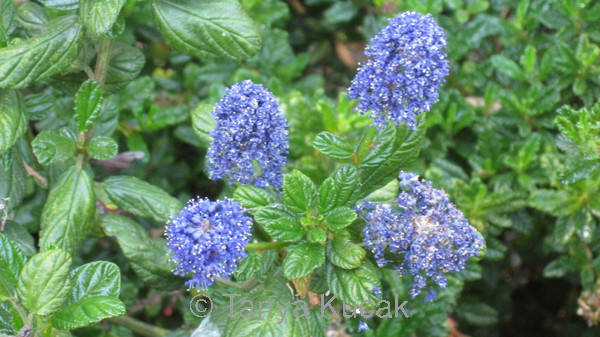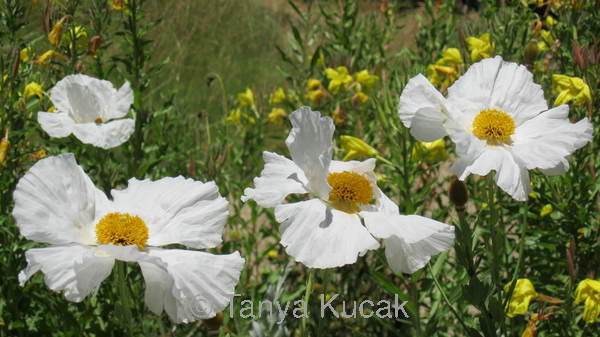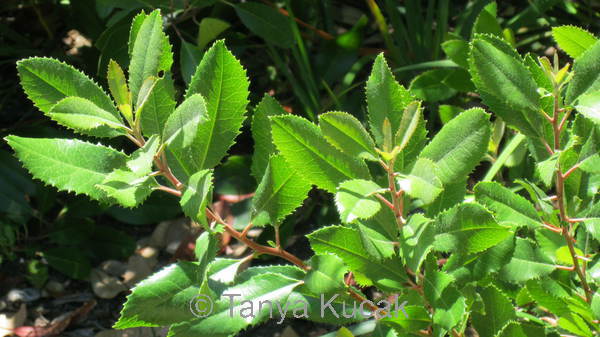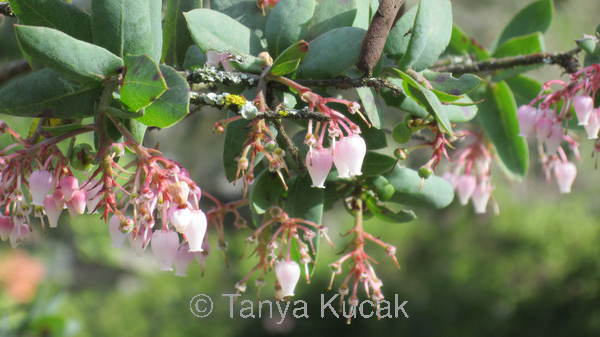
Coastal California is a desert, especially the southern part of the state, because it imports so much water from other areas. And brush has to be eliminated to prevent wildfires. Really?
Not so on both counts. In fact, coastal California enjoys a Mediterranean climate, according to Richard Halsey of the California Chaparral Institute. And in a wildfire, the chaparral ecosystem often dismissed as brush serves as a filter or sponge for embers, Halsey said, so that embers won't reach a house. Halsey spoke at a meeting of the California Native Plant Society in Los Altos last month.
Chaparral is the ecosystem in-between grasslands and forests, with key drought-tolerant shrubs such as ceanothus, manzanita, chamise, scrub oak, mountain mahogany, or silk-tassel tree. Many of these shrubs are familiar to gardeners for their beauty and their low maintenance needs once they are established.
Chaparral is California's most extensive characteristic ecosystem. It's a rich, diverse ecosystem that is disappearing fast but is critical to preserving the state's biodiversity, he said.
Often located close to human habitat, chaparral provides crucial habitat for wildlife. For instance, the California condor was saved from extinction because of chaparral habitat, he said. But encroaching development fragments the land into smaller parcels that are no longer welcoming to wildlife. Or the the land is converted to agricultural uses or grazing. Habitat losses also occur when fires are set because of a mistaken notion that chaparral needs to burn, when in fact it is destroyed by frequent fires.
Old-growth chaparral does not need to burn. Historically, chaparral ecosystems have burned every 30 to 150 years. Frequent fires convert the shrubby ecosystem to weedy grasslands, Halsey said.
Certain chaparral plants can survive infrequent fires – those that occur more than 15 or 20 years apart. For instance, bush poppy seeds will germinate with heat and matilija poppy seeds will germinate with smoke. Obligate seeders such as most ceanothus and manzanita species will germinate and grow rapidly after a fire. Of course, these plants need time to reach a significant size and rebuild the seed bank.
Obligate resprouters such as oak and toyon have large seeds that get eaten as soon as the seed hits the ground, he said, and after a fire will regenerate from burls. But even the burls are vulnerable to a too-hot fire, or too-frequent fires.
Facultative seeders such as chamise and lemonade berry use both strategies: germinating and resprouting after a fire.
To preserve the important chaparral ecosystem, Halsey advised, become a chaparralian and eliminate things that prevent you from going outdoors. Understand the natural environment, welcome nature back, become a mentor to someone else, and take a stand.
Large connected complexes of decadent old chaparral, a rare and beautiful resource, are necessary, Halsey said.
Making one change in an ecosystem can lead to unanticipated consequences, for better or worse. For instance, he said, when wolves were introduced into Yellowstone, the fish in the streams started coming back because the presence of wolves kept the moose from going down to the streams.

Gorgeous ceanothus flowers brighten chaparral habitats in early spring.

Smoke facilitates germination of matilija poppy seeds.

Toyon leaves are tough enough to withstand the hot, dry chaparral habitat.

Manzanita is a key shrub of chaparral ecosystems.
© 2012 Tanya Kucak